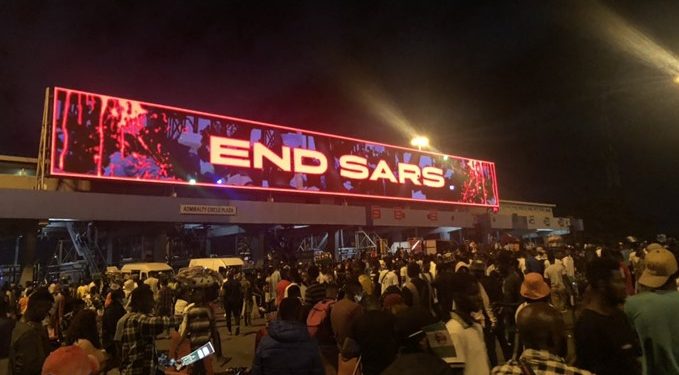

ENDSARS: A Continuum of Business As Usual and Repetition of History
The strength and reality of the EndSars movement is the manifestation of the organisation and galvanisation of the Nigerian youth.
It is the outcry for an end to Police brutality and the amelioration of the Nigeria Police force. Remembering how the Endsars protest concluded is just another tragic end in Nigeria history. It is quite not shocking that this is a concurrent trend in the nation.
The pandemic has had its toll on the world most especially underdeveloped nations. In Nigeria, it would upturn the state of the nation. Her primitive economic culture owes largely for the chaos that followed.
On October 3rd 2020, a disturbing viral video pulled the trigger. It contains SARS police officers shooting a young Nigerian and whisking with his vehicle, a Lexus SUV. This prompted the #EndSars trend which began on the Nigeria titter space. Thereafter, on the 5 of October, another tragedy had struck. SARS operatives killed Sleet, an aspiring musician. The police killed him in cold blood when he took off at the sight of the approaching operatives.
This series of events had culminated in taking the protest to the street. On the 8th of October, the nationwide protest began after immediate casualties of police brutality and the spread of videos and pictures of police brutality harassment and extortion on the social media space. During these times, there was a wrenching emboldening and high intolerance against police brutality in the streets. People began to speak out and share their stories and experience of police extortion and brutality. Young Nigerians who were mainly the victims occupied the major demography of the protest
The organisers of the protest laid a five-point demand
- Immediate release of all arrested protesters
- Justice for all deceased victims of police brutality and appropriate compensations for their families.
- Setting up an independent body to oversee the investigation and prosecution of all reported police misconduct within a period of 10 days
- Carrying out psychological evaluation and retaining of all disbanded SARS operatives before they can deployed (this should be verified by an independent body).
- The government should increase police salary and they should adequately compensated for protecting lives and property of the citizens
The presidential spokesman, Femi Adesina announced that the government had accepted the demand. The protesters felt it were just mere words. They wanted action to mere words before leaving the street.
During the protest, police intervention seems to threaten and worsen the ambience. Oftentimes, it led to the loss of lives and properties. In the FCT, there was a clash of the protester against anti-protester who were allegedly funded by top government officials. In Lagos, a clash of protesters and anti-protester ensued but was also contained by the organised protesters. Despite the counter-protest attempt, the EndSars protest began to spread and became a global movement in Europe, the Americas, Oceania and other parts of the world.
However, it would be worthy to note that the nation may still be highly divided on regional lines. There appears to have been a clash between the North and the South on the EndSars protest. A ProSars protest against the EndSars had begun all over the nation. The latter gained momentum in the south as the former in the north. There were ProSars demonstrations in the core northern states. It led to a tussle of words on regional lines on Twitter. This raises the question of if truly, the nation might work as a federal entity.
There were patches of crises during the EndSars protest across the country until the last straw that broke the horse’s back. The protest lasted about 2 weeks. Thereafter, the protest somewhat translated to a battle between the police and the youth.
On the 20th of October, the Nigerian army orchestrated a massacre, killing peaceful protesters at the Lekki tollgate. This action the federal government has denied and labelled as false and never took place.
To further curb the protest, the government impose a curfew. It drew a battle line between the police force and the Nigerian Youth. The world saw how the Nigeria Police shot young people on the street via social media. The state of the nation was in chaos after which order was restored. The government took countermeasures such as banks accounts and passports were frozen, seized and withheld. There were allegations of securities force breaking’ onto the home and adopting chief protesters.
However, this trend of the Nigerian government killing her people isn’t new. Commiserating with the victims of police brutality, we remember the innocent victims of the 1966 ant-Igbo pogrom in northern Nigeria, the Asaba massacre of 1967, the ‘Ali Must Go’ riot of 1978, SAP Riots of 1989, the June 12 election protest crises, the bloody crackdown of Shia protesters in 2019 and so on. In the spirit of humanity, we won’t be silent at any form of oppression. For all men are born free.



No Comments